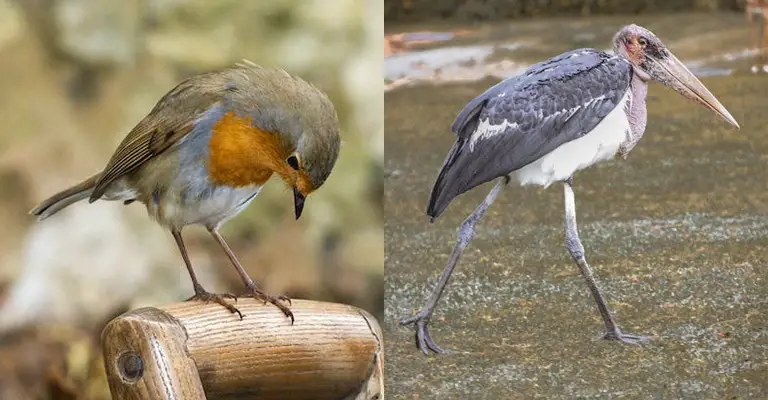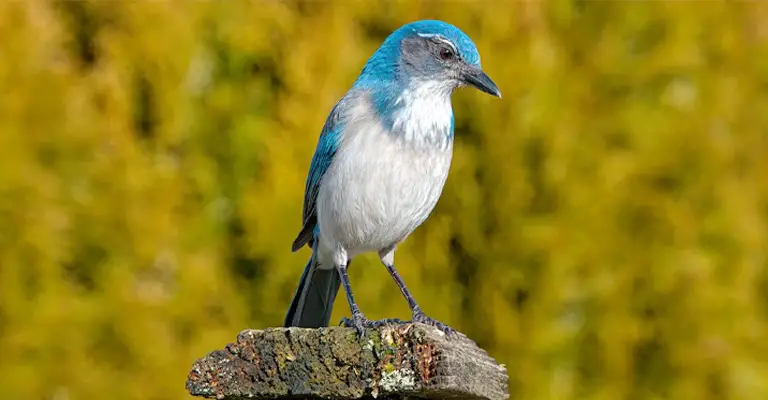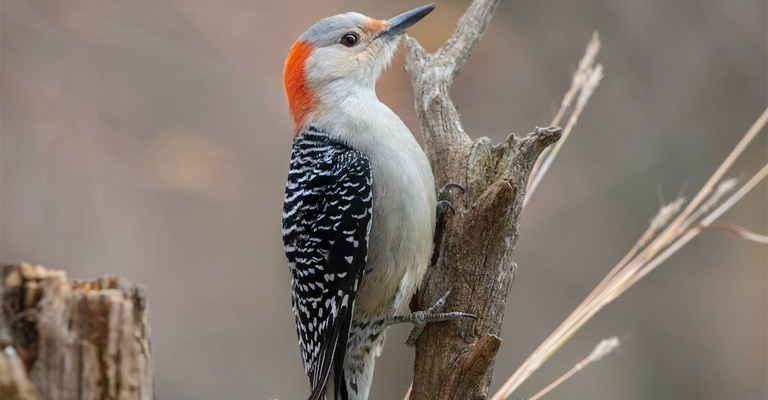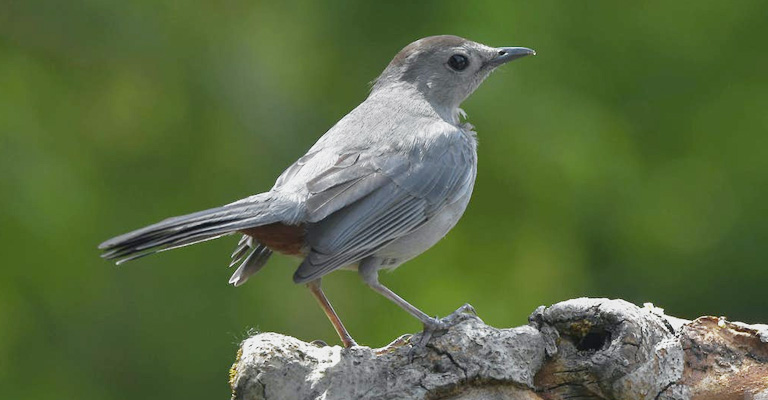The avian world’s diversity is as fascinating as it is perplexing, and the ways in which birds move on the ground further underscore this intriguing spectrum.
The juxtaposition of hopping and walking among different bird species presents a captivating puzzle that reflects their unique adaptations and ecological roles.
The factors behind these distinct locomotion methods range from anatomy and physiology to habitat and foraging strategies.
Delving into the question of why do some birds hop and others walk unveils a tapestry of evolutionary wonders that showcases nature’s exquisite craftsmanship in sculpting avian forms to suit a myriad of niches.

Why Do Some Birds Hop And Others Walk?
This is a very interesting topic, as bird locomotion is influenced by many factors, such as anatomy, environment, and evolution.
Here are reasons why some birds hop, and others walk:
Body Structure
One reason why some birds hop and others walk is because of their body structure and anatomy. Birds with longer legs and a more elongated body shape are more likely to walk, while those with shorter legs and a more compact body shape are more likely to hop.
This is because the structure of their legs and feet is better suited to the different modes of movement, allowing them to move more efficiently and effectively in their environment.
Habitat
Another reason why some birds hop and others walk is because of their habitat and environment.
Birds that live in densely forested environments are more likely to hop, as this mode of movement allows them to navigate the understory and forest floor more easily.
On the other hand, birds that live in open grassland environments are more likely to walk, as this allows them to cover greater distances more quickly.
Evolution
A third reason why some birds hop, and others walk is because of their evolution and adaptation. Over time, birds have evolved different modes of movement in response to their environment and ecological niche.
This means that the way a bird moves is not just a result of its anatomy and environment but also reflects its evolutionary history and the adaptations it has made to survive and thrive in its environment.
Agility
A fourth reason why some birds hop, and others walk is because of their agility and maneuverability. Hopping birds have an advantage over walking birds when it comes to agility and maneuverability.
Their ability to jump and hop allows them to navigate through difficult terrain, such as rocky mountainsides or dense forests. Hopping birds can also change direction quickly and avoid obstacles or predators.
Speed
A fifth reason why some birds hop, and others walk is because of their speed and endurance. Walking birds have an advantage over hopping birds when it comes to speed and endurance.
Their ability to stride one leg after another allows them to move faster and longer than hopping birds. Walking birds can also maintain a steady pace and conserve energy over long distances.
Feeding
A sixth reason why some birds hop, and others walk is because of their feeding habits and diet. Different birds have different ways of finding and consuming food, which may affect their mode of movement.
Some birds, such as woodpeckers, cling to the trunk of a tree to feed on insects hiding in the bark, while others, such as seagulls, walk along the beach to hunt for crabs and mollusks.
Additionally, food availability plays a significant role in determining a bird’s mode of movement.
Communication
A seventh reason why some birds hop, and others walk is because of their communication skills and social behavior.
Some birds use their mode of movement as a way of communicating with other birds or animals, such as signaling their intentions or emotions.
For example, some birds may hop or jump to display aggression or dominance, while others may walk or run to show submission or fear.
Personality
An eighth reason why some birds hop, and others walk is because of their personality and individual preferences.
Some birds may have individual personalities that influence their behavior and choices, including their mode of movement.
For example, some birds may be bold or shy, more curious or cautious, more playful or serious than others.
Learning
A ninth reason why some birds hop, and others walk is because of their learning ability and intelligence. Some birds may learn from their own experiences or from observing other birds or animals, which may affect their mode of movement.
For example, some birds may learn to associate sounds or signals with rewards or punishments and modify their behavior accordingly. Some birds may also learn to solve simple problems or use tools to obtain food or water.
I hope this answer helps you understand why some birds hop and others walk with eggs.
Which Bird Hop?
Hopping is a mode of movement that some birds use to navigate on the ground, especially in dense or uneven terrain.
Hopping birds move both legs at the same time, jumping or bouncing from one spot to another.
Here are some examples of birds that hop:
Passerines

Passerines are the largest and most diverse group of birds, comprising over half of all bird species. They are also known as perching birds or songbirds, as they have a special foot structure that allows them to grasp branches and sing complex songs.
Most passerines hop on the ground, as this allows them to move quickly and agilely through the understory and forest floor. Some examples of hopping passerines are sparrows, finches, jays, chickadees, and wrens.
Woodpeckers

Woodpeckers are a group of birds that have strong bills and feet that enable them to cling to the trunks and branches of trees and peck holes in the bark to find insects.
Woodpeckers also hop on the ground, as this helps them to search for food or nesting sites in fallen logs or stumps. Some examples of hopping woodpeckers are downy woodpeckers, hairy woodpeckers, and flickers.
Penguins

Penguins are a group of flightless birds that live in the Southern Hemisphere, mostly in Antarctica. They have wings that are modified into flippers that help them swim underwater and catch fish.
Penguins also hop on land, as this allows them to move over snow or ice more easily than walking. Some examples of hopping penguins are emperor penguins, king penguins, and rockhopper penguins.
I hope this answer helps you learn more about which birds hop and why they do so. Birds are amazing animals that have different ways of moving on the ground depending on their anatomy, environment, and evolution.
Do All Hopping Birds Have The Same Leg Structure?

Hopping is a mode of movement that some birds use to navigate on the ground, especially in dense or uneven terrain.
Hopping birds move both legs at the same time, jumping or bouncing from one spot to another. However, not all hopping birds have the same leg structure, as there are some variations and adaptations among different species.
Here are some examples of how the leg structure of hopping birds differs, based on the information from Chipper Birds:
Hip Structure
One of the main differences in the leg structure of hopping birds is their hip structure. Hopping birds have a distinctive hip structure that enables them to hop in an efficient and balanced manner.
Their hips are more flexible and allow them to move their legs in a wider range of motion than walking birds.
Their hips also have a special joint called the intertarsal joint, which allows them to bend their legs at two points: the knee and the ankle. This gives them more power and control over their hops.
Leg Length
Another difference in the leg structure of hopping birds is their leg length. Hopping birds have shorter legs than walking birds relative to their body size.
This is because shorter legs are better suited for hopping than walking, as they reduce the amount of energy and force required to move.
Shorter legs also help to hop birds maintain their balance and stability when they land.
Leg Strength
A third difference in the leg structure of hopping birds is their leg strength. Hopping birds have stronger legs than walking birds, as they need more muscle power to propel themselves upwards into the air.
Their legs have strong tendons and ligaments that act as springs and store energy for each hop. Their legs also have strong bones that can withstand the impact of landing.
FAQ
Birds’ modes of movement are shaped by their anatomy, habitat, and foraging strategies. Hopping and walking are adaptations that help them navigate various environments and fulfill specific ecological roles.
Leg structure plays a crucial role. Birds with longer legs and strong feet are more likely to walk, while those with shorter legs and powerful hind limbs are better suited for hopping, a more energy-efficient movement.
Absolutely. Birds that inhabit dense vegetation or forest understory often find hopping more efficient for moving among branches and foliage. Ground-dwelling birds, on the other hand, tend to walk for effective navigation on open terrain.
Hopping conserves energy and provides stability in cluttered environments. It allows birds to navigate through branches, bushes, or uneven surfaces efficiently, making it an advantageous movement strategy in specific niches.
Wading birds often have long legs adapted for walking. Their tall and slender physique suits walking in shallow waters while searching for prey.
Walking minimizes disturbance in aquatic habitats and helps them maintain balance while foraging.
Conclusion
The juxtaposition of hopping and walking in the bird kingdom serves as a testament to the astonishing diversity of adaptations that emerge from the intricate Dance of evolution and ecology.
Each species’ locomotion method, whether it’s hopping, walking, or a combination of both, reveals a specific set of evolutionary trade-offs honed to perfection over time.
From the sprightly hop of sparrows to the dignified walk of wading birds, these movements provide insight into the bird’s habitat, foraging behaviors, and physiological constraints.
Embracing the nuances of how birds navigate their world on the ground not only enriches our understanding of their lives but also deepens our appreciation for the remarkable array of forms and functions that coexist within the avian realm.